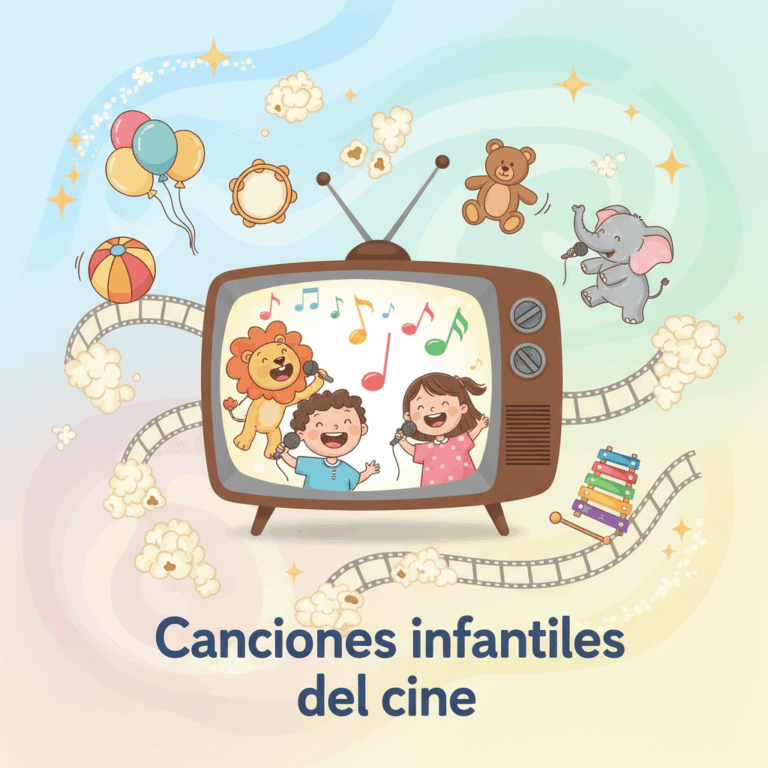Classic children's songs from film
The classic children's songs Films have been an essential part of shaping several generations. Their ability to entertain and educate makes them unforgettable.
Disney productions, in particular, stand out for the quality of their themes, which convey valuable messages about life, friendship, and acceptance.
Disney Themes and Messages
Disney has produced songs that have become symbols of teaching. For example, “Hakuna Matata” promotes a positive and carefree attitude towards life.
Other songs like “A Whole New World” inspire imagination and a desire to explore. Each song carries an important message that teaches and motivates children.
“Let It Go” is a clear modern example, highlighting the importance of emotional expression and child empowerment through music.
Iconic songs from other productions
Disney isn't the only one with iconic songs. Productions like "Toy Story" with "You've Got a Friend in Me" emphasize the value of true friendship that endures over time.
“Remember Me” from “Coco” highlights the connection with family and the memory of loved ones, reinforcing the importance of keeping emotional bonds alive.
These songs transcend the film and are incorporated into daily activities, enriching the emotional and social development of children.
Emotional and educational impact of children's songs
Children's songs in films play a fundamental role in the emotional development and educational for children, facilitating the connection with their feelings.
Through music and lyrics, children learn to express emotions, share, and understand the world around them, making learning an enriching experience.
Emotional and social development
Children's songs promote emotional expressionhelping children to identify and manage their feelings in a positive way.
Furthermore, they foster social skills such as empathy and collaboration, as many deal with fundamental human values and relationships.
By participating in and repeating these songs, children also experience a sense of belonging and security within their family and social environment.
Contribution to language learning
These songs are effective tools for the development of languagebecause they introduce new vocabulary in fun and memorable contexts.
Repetition and melodies facilitate the retention of words and phrasesimproving pronunciation and listening comprehension from an early age.
In this way, children develop key communication skills that will be useful to them in their education and daily life.
Reinforcement of values and teachings
Songs like “Hakuna Matata” or “You’ve Got a Friend in Me” convey positive values such as optimism, friendship, and respect for others.
These messages help children understand and adopt social and ethical norms, promoting healthy behaviors and harmonious coexistence.
In this way, children's music not only entertains, but also educates and shapes character from childhood.
Traditional songs outside of cinema
Traditional children's songs are often a fundamental part of childhood, transmitting culture and teachings without needing to be part of a film production.
These melodies accompany daily routines and strengthen family bonds, as well as helping in the cognitive and social development of children.
Examples of popular songs and their role
Examples such as “Pin Pon”, “El cocherito leré” and “Estaba la rana cantando debajo del agua” are popular songs that nourish collective memory and encourage the active participation of children.
These songs reinforce everyday habits, such as self-care and respect, becoming accessible and effective educational tools.
Furthermore, by being transmitted orally, they promote cultural tradition and a sense of belonging in different communities.
Cultural and family importance
The children's songs Film and traditional media play an essential role in cultural transmission. They are links that bring different generations closer together through music and memory.
Its value goes beyond entertainment, consolidating identity and family roots, and facilitating dialogue between grandparents, parents and children through shared melodies.
Cultural heritage between generations
Children's songs act as cultural bridges that transmit traditions and values from generation to generation. In this way, they reinforce the sense of belonging to a community or family.
This musical legacy keeps traditions alive and promotes respect for cultural diversity by integrating universal themes that connect children and adults.
When experienced as a family, these songs become part of moments of togetherness and celebration, strengthening the emotional bond between members and preserving family history.
Use in family and school activities
Children's songs are frequently used in everyday activities, both at home and at school, facilitating learning in a fun and effective way.
In the family environment, music encourages joint participation, communication, and the development of social skills between parents and children.
In schools, these songs are pedagogical tools that complement the teaching of values and the cognitive and emotional development of children.






